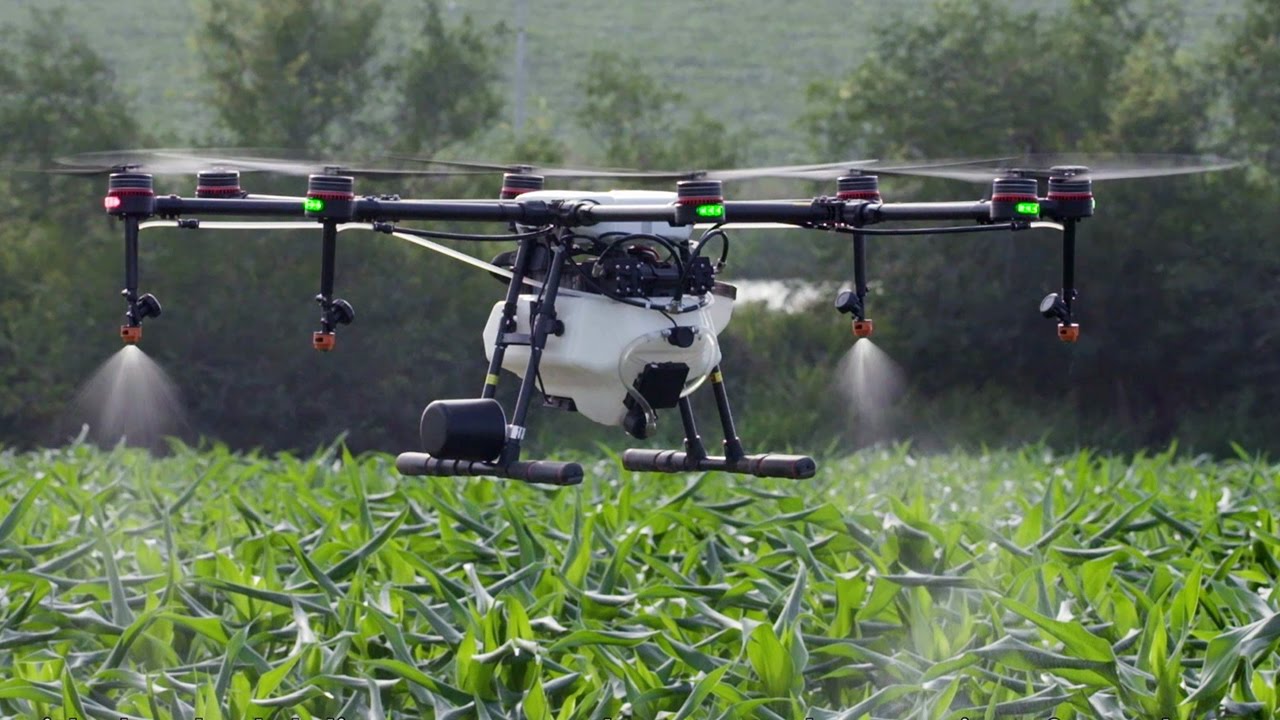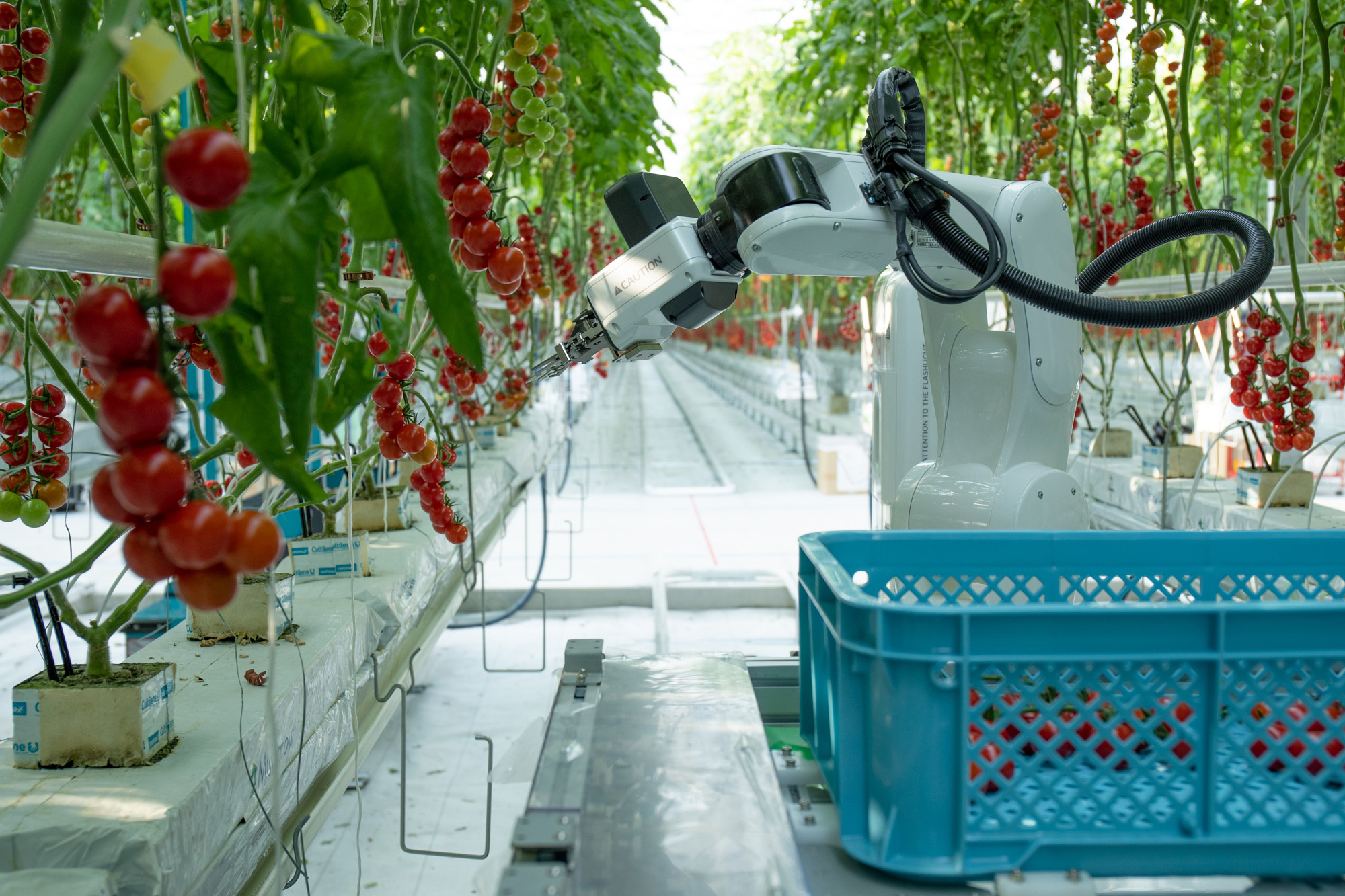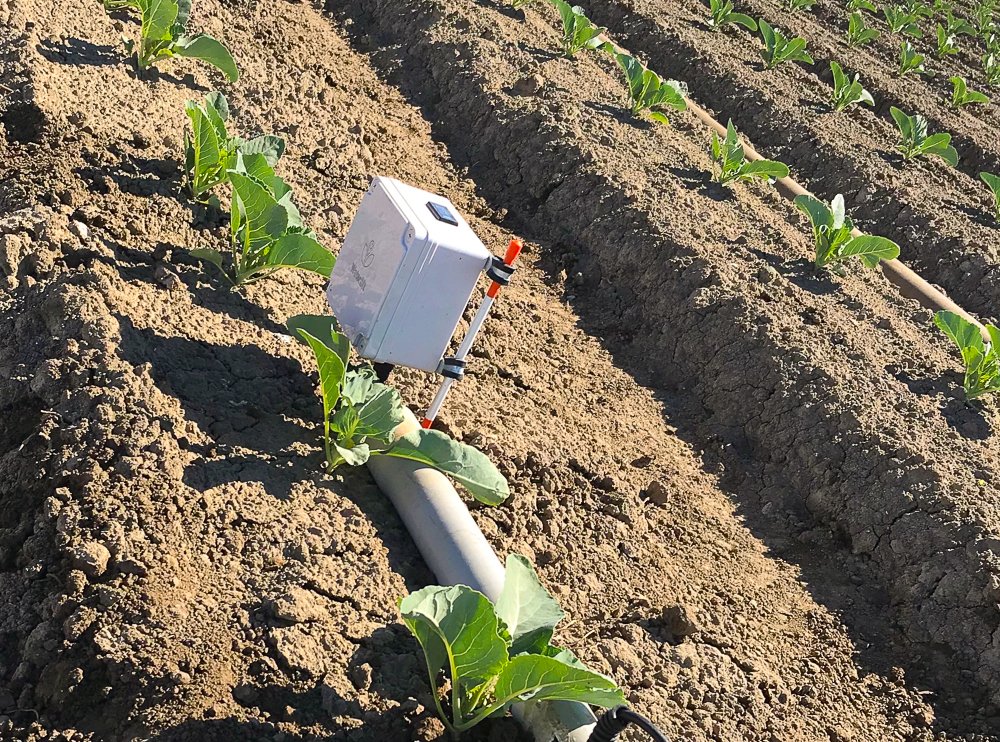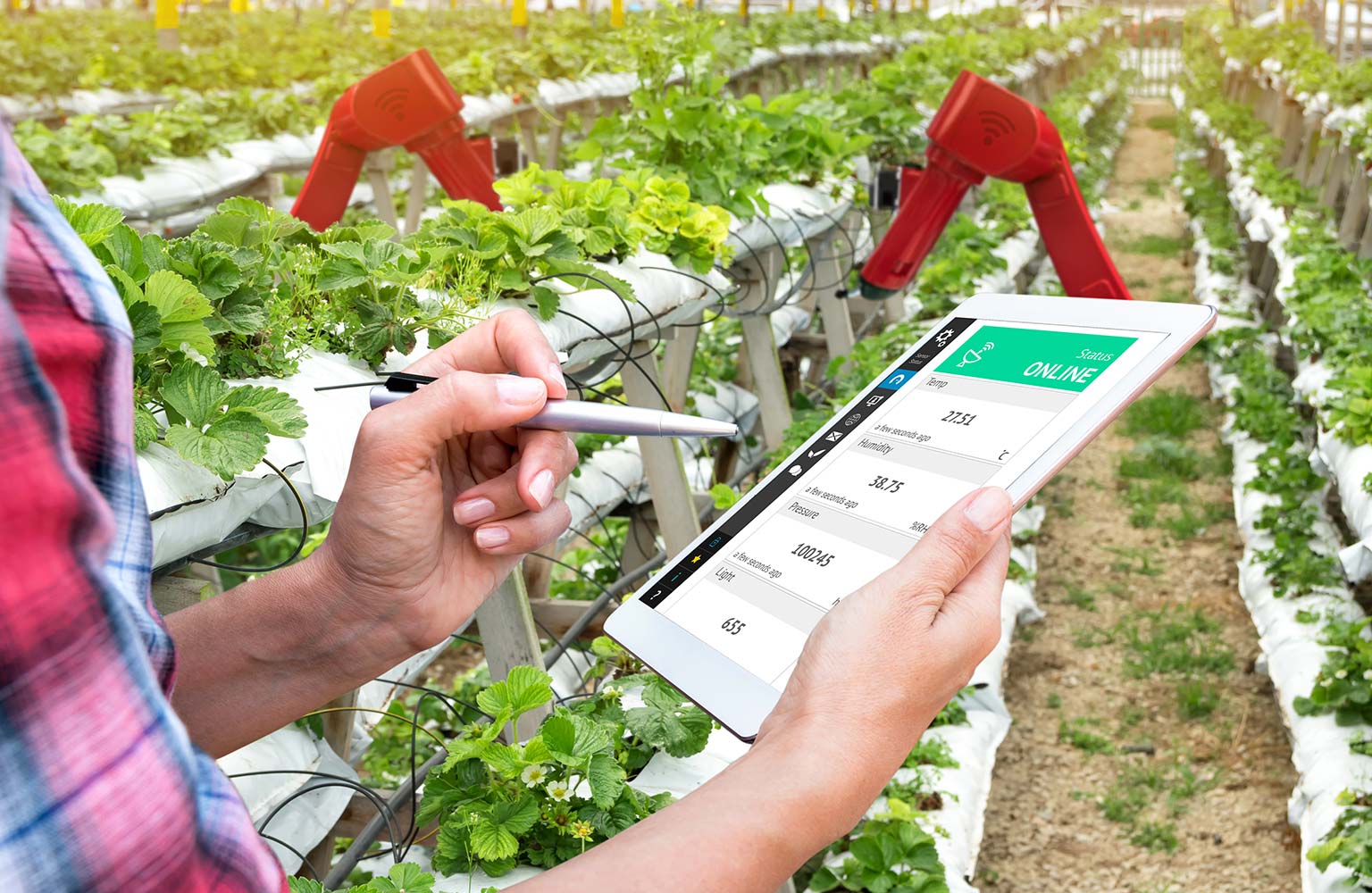IoT in Agriculture: Use Cases, Solutions, Software Development
The global population is steadily increasing, while farmers are finding it harder and harder to supply more people with food. According to the “Global agriculture towards 2050” report by the Food and Agriculture Organization (FAO) of the United Nations, the global population is expected to grow to 9 billion by 2050. This means that demand for food will increase as well.
The global population is steadily increasing, while farmers are finding it harder and harder to supply more people with food. According to the “Global agriculture towards 2050” report by the Food and Agriculture Organization (FAO) of the United Nations, the global population is expected to grow to 9 billion by 2050. This means that demand for food will increase as well.
The global agriculture market is expected to grow from $9600 billion in 2020 to $10180 billion in 2021 at a CAGR of 6%. But despite the fast growth of the agricultural sector, the world needs it to grow faster. According to FAO, in 2050, farmers will have to produce 70% more food than in 2016 to keep the population fed, and this puts lots of pressure on farmers.
Technology has come to the rescue in lots of industries, and agriculture is one of them. Farms and agricultural businesses incorporate lots of technologies into their work, from big data and machine learning for forecasting and efficiency to autonomous robots, sensors, and drones. This is called smart agriculture.
Field monitoring and automation using IoT in agriculture are just a few examples of how technology can help. In this article, you’ll learn how to use IoT in agriculture to achieve multiple goals and increase overall efficiency and productivity.
What is IoT for smart agriculture?
Internet of Things technologies allow to create ecosystems of devices that work together to achieve goals. Internet of Things devices are often based on sensors that provide data for deep analysis and devices that can work autonomously based on data from sensors and user commands.
Internet of Things ecosystems use various data transfer protocols to allow devices and IoT sensors in agriculture to communicate and act depending on programmed rules and conditions. For example, if a sensor detects a leak, a smart valve can switch off and stop the flow of water.
Precision agriculture is the largest smart agriculture sector. Its main principle is making small changes and improving decision-making based on hard data. Farming depends highly on circumstances, and technologies like the Internet of Things help farmers modify their strategies for the best results.
Here’s where IoT can help within the agricultural sector:
- Water control
- Livestock monitoring
- Weather forecasting
- Asset management
- Location tracking
- Animal health monitoring
- Soil condition monitoring
- Temperature and humidity control
- Crop monitoring
- Irrigation
- Pesticide and fertilizer use optimization
- Farm mapping
IoT devices for farmers include:
- Robots
- Drones
- Various sensors
- Valves
- Thermostats
- GPS tracking devices
Let’s now talk about the advantages of IoT in agriculture.
Benefits of IoT in agriculture
Get data. Lots of it.
The amount of data you can get from any part of your agricultural business with IoT devices is crazy. Every sensor that works on your farm will constantly send information to the “brain” of your IoT system, which can process it and present the most important insights to you.
In ever-changing agricultural conditions, it’s vital to notice every slight change in data. Analytics will help you see changes immediately without having to compare data sets from different time periods yourself.
Make predictions and decisions
Plenty of information and big data algorithms that are able to analyze it lead to better predictions based on historical data. All of this will help you make the best decisions and minimize risks.
With IoT, you can analyze soil quality, weather, and crops, then compare this information with models from previous years. This will help you avoid wasting your harvest and quickly meet demand for particular crops.
Automate operations
IoT devices not only gather information but react to it. Smart thermostats, valves, irrigation systems, and drones can automatically respond to commands from a core system that’s programmed to execute tasks either on schedule or based on incoming data.
The future of IoT in agriculture is full automation. Its capabilities can help you optimize human work and increase the production efficiency of your agricultural business.
Manage costs
You can predict supply and demand for certain products and crops with the help of big data and quickly react to any anomalies in crop growth to avoid losing your harvest.
Now, let’s discuss use cases of IoT in agriculture in more detail, then talk about what you’ll need to successfully implement this technology into your own farm business.
IoT applications in agriculture
Remote sensors
Remote sensors are a primary component of an IoT-based monitoring system in smart agriculture. They help you gather information on everything from temperature and humidity to soil conditions, dew, and plant health. These sensors send signals to the “brain” of the IoT system and trigger an automated response and warn the employees.
Remote sensing can also help with tracking the geolocation of cattle or equipment such as trucks.
Drones
Drones are widespread in agriculture. Farmers equip them with sensors, cameras, and even irrigation systems that allow them to spread pesticides in specific areas, helping with precision farming.
There are two types of drones used in agriculture: aerial drones and ground bots on wheels. Aerial drones can be controlled remotely or fly autonomously along a predetermined route using mapping and GPS.

You can use drones to survey your farm, spray plants with pesticides or fertilizers, plant crops, and count plants.
Robots
Robots made a great impact of IoT in agriculture, as they’re the primary way of automating certain farm operations. They help agricultural businesses save money on human labor, increase and accelerate production, and handle sophisticated tasks like berry collection.
Robots save farms from labor shortages and use advanced sensors and AI to imitate and even surpass human capabilities. But what do robots do on farms exactly?
- Weeding
Weeds become increasingly resistant to pesticides, and sometimes they have to be removed manually. Robots use image recognition to tell weeds apart from crops and eliminate them with robotic arms or by spraying pesticides directly on them.
- Navigation
Robots can also help you automate and control heavy machinery and tractors remotely with GPS. Robotic navigation systems can be integrated into your machines and simplify the process of harvesting or planting crops. Automated navigation systems map territory and adjust automatically depending on the terrain and obstacles.
- Harvesting
Harvesting robots come in different shapes and forms depending on the harvest. Some are able to work with delicate berries like strawberries without squishing them while also sorting the harvest using image recognition.

Robots can pick fruits and vegetables 24/7, which makes them extremely beneficial to businesses.
- Heavy labor
Robots can also help workers move heavy objects, optimize space, and therefore reduce your operating costs.
Cameras
Smart cameras paired with image recognition and GPS navigation can map out the whole farm and then evaluate the health and growth rate of crops, detect anomalies, and control the quality of crops based on their size, form, and color.
This technology can also help you sort and grade your crops based on their quality and improve it by irrigating and spraying fertilizers or pesticides precisely with the help of mapping.
What to consider before building your IoT solution
Though IoT technology can bring a lot of benefits to agricultural businesses, integrating it can be tricky. These are not necessarily the disadvantages of iot in agriculture, but challenges to overcome. I want to show you what to pay attention to when building your own IoT system for your farming business.
IoT devices
There are hundreds of IoT devices for agriculture, from sensors to drones, with different properties and from different manufacturers. You need to carefully choose devices and make sure they’re compatible with each other. Also, keep in mind that the quality of sensors directly influences the accuracy of the data you’ll receive.

Core software
Developing a data center for your IoT system is a challenge, as an advanced IoT system incorporates the latest technologies like AI, big data, image recognition, and machine learning. Your software should be able to accurately analyze all incoming data and derive insights from it that will help you make decisions. Also, you’ll need to integrate algorithms and rules if your goal is business automation.
Maintenance and support
Once you develop your system and integrate IoT technology in agriculture, the work doesn’t end. You have to constantly maintain your hardware and software. Though sensors for agriculture are rigid, they still require attention because they can be damaged in the field. Software should also be regularly updated and checked.
Remote access
You need to choose the best protocol for communication between devices so you can easily access them from your smartphone, tablet, or desktop computer. Each device should be autonomous enough to be able to send data to the central server and to other devices so they can automatically react to alerts.

Infrastructure
All of your devices have to work together as an organism, and it’s important to make sure everything is compatible. With IoT, this can be a challenge, as infrastructures often are made up of devices from different manufacturers. Your developers should be able to help you unite all of them into a single system.
There are also different types of IoT architectures, and yours should be easy to maintain and secure. Security is one of the challenges of IoT in agriculture, so you need to do constant security checks on your software and devices.
Connection
The IoT industry suffers from a lack of unification and standardization. Devices use many different connection protocols, which makes it hard to build a unified system. Each time you purchase a device for your farm ecosystem, you need to think about the connection protocol. Here are the most widely used protocols for IoT device connections:
- Message Queuing Telemetry Transport (MQTT)
- ZigBee
- Bluetooth
- Extensible Messaging and Presence Protocol (XMPP)
- Data-Distribution Service (DDS)
- Advanced Message Queuing Protocol (AMQP)
- Lightweight M2M (LwM2M)
Data security
IoT systems are prone to breaches because each device is a potential entry point for hackers, who can infiltrate the system not only through software but also through hardware.
Precision agriculture depends on transmitting and analyzing large sets of data, and some devices that receive that data and also connect to the internet have little to no security.
What can you do for the security of your farm IoT system? You can integrate an AI that will track suspicious activity and encrypt all data that’s being transmitted. Some agricultural businesses also use blockchain technology to ensure the security of their data.
How to build your own IoT system for agriculture
There are many different types of agricultural applications for different purposes, from tracking cattle to automating irrigation and enabling precision farming. There are already lots of off-the-shelf solutions on the market, but most of them are inconvenient, as each farm is unique and needs its own set of features.
Off-the-shelf solutions are also hard to customize and integrate into existing systems. That’s why I advise custom development for agricultural businesses. But how do you actually start?
Formulate your vision
Before you start planning development, you need to create a vision of your IoT system. For this, you need to answer these questions:
- What issues should the software solve on my farm?
- What goals do I want to achieve with this system?
- Who will use this system?
- Will my employees need training to use this system?
- What types of data do I want to get?
- How will this system affect my business revenue?
- What’s my budget for development?
- What main features do I need?
- Do my competitors already use IoT on their farms?
After you’ve answered all these questions, it’s time to look for developers.
Find a development company
Agriculture apps aren’t simple to develop, so you’ll need a team for best results. The team should consist of these specialists:
- Server developer
- Mobile developer
- Project manager
- UI/UX Designer
- Business analyst
- Quality assurance specialist
The best way to get all those specialists is to partner with a software development company. To find the best development vendor for you, you can:
- Search sites such as Clutch and GoodFirms and read reviews
- Visit blogs for the most relevant information on IoT in agriculture and learn more about companies
- Study portfolios on company websites
- Ask for recommendations from your partners and acquaintances
Contact potential vendors, ask them for their portfolio, and request a proposal. When communicating, make sure vendors have expertise in IoT development and agriculture in particular. A good vendor will suggest not only software but also the best hardware options for your business.
Do a discovery phase
During the discovery phase, you work mostly with a business analyst who translates your business needs into specific technical requirements. A business analyst also helps you formulate your vision in detail, analyze both the market and competitors, and come up with a concrete development plan.
By the end of the discovery phase, you’ll get a technical specification: a document that shows each step of the development process from features, hardware, and all integrations to the wireframe design, use cases, and stakeholders.
Develop your system
After you and your team have a plan of work, you should decide what features you want to develop first and begin the development process. A good development company will constantly send you reports on their work, warn of any potential issues beforehand, and eliminate them as soon as possible.
During development, you’ll need to work with your vendor as a team and also test the software and hardware in the field to make sure the system works properly.
After deployment, your vendor should maintain and support your product. This includes:
- Fixing bugs
- Running security checks
- Updating third-party services
- Updating frameworks and libraries
Final thoughts
The importance of IoT in agriculture is immense. IoT technology can be used for precision farming, data collection, decision-making, forecasting, and operation automation. Its use cases are vast, covering everything from weeding and harvesting to remotely controlling machinery and optimizing costs.
Sensors, robots, and drones are the primary IoT devices you can use to create an ecosystem for your agricultural business to reduce risks and increase productivity.
However, IoT development can be rather challenging, and you need to pay attention to device compatibility, security, and connectivity. To build a reliable system that will help you achieve your business goals, I advise you to partner with an experienced IoT app development company that will be able to help you choose the best hardware and software for your particular needs.
IoT technology possibilities are vast: it can be used for precision farming, data collection, decision-making, forecasting, and operation automation
At Mobindustry, we have experience in IoT development for different industries including agriculture. If you’re interested in pairing your agricultural expertise with high-end technology, make sure to contact us. We’ll be able to suggest the most reliable and compatible devices for your farm and connect them within one smart ecosystem.

